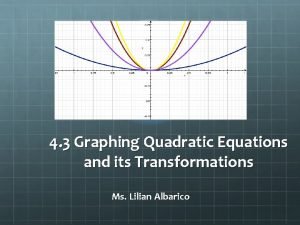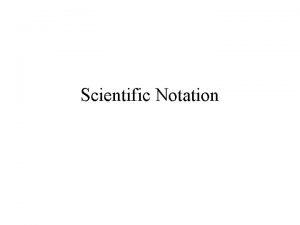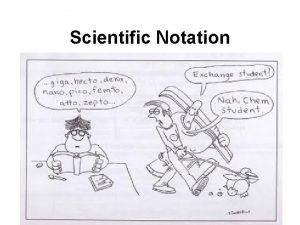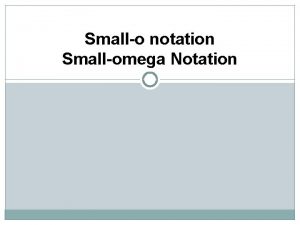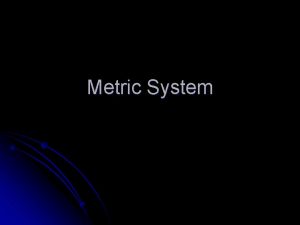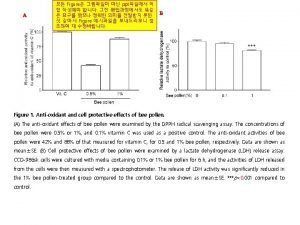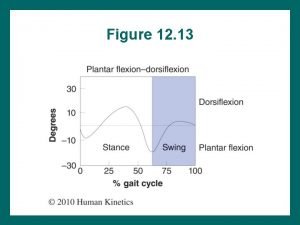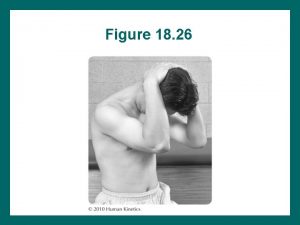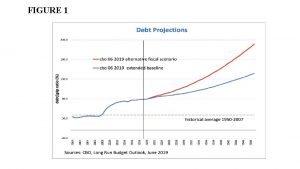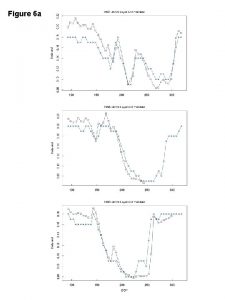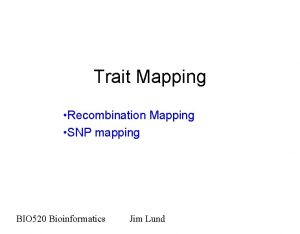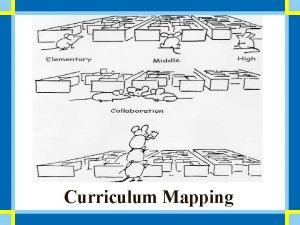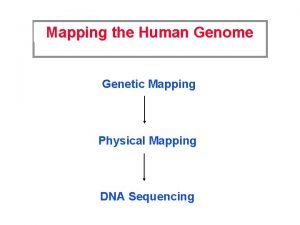Figure 13 1 System notation for the mapping



![Figure 13. 4 Approximate realization using the DFT of (a) D∗ [・] and (b) Figure 13. 4 Approximate realization using the DFT of (a) D∗ [・] and (b)](https://slidetodoc.com/presentation_image/4fdf927ec00704faed1891f628001728/image-4.jpg)
![Figure 13. 5 (a) Samples of arg[X(ejω)]. (b) Principal value of part (a). (c) Figure 13. 5 (a) Samples of arg[X(ejω)]. (b) Principal value of part (a). (c)](https://slidetodoc.com/presentation_image/4fdf927ec00704faed1891f628001728/image-5.jpg)




![Figure 13. 10 The sequences: (a) v[n], (b) p[n], and (c) x[n] corresponding to Figure 13. 10 The sequences: (a) v[n], (b) p[n], and (c) x[n] corresponding to](https://slidetodoc.com/presentation_image/4fdf927ec00704faed1891f628001728/image-10.jpg)
![ˆ ˆ ˆ Figure 13. 11 The sequences: (a) v[n], (b) p[n], and (c) ˆ ˆ ˆ Figure 13. 11 The sequences: (a) v[n], (b) p[n], and (c)](https://slidetodoc.com/presentation_image/4fdf927ec00704faed1891f628001728/image-11.jpg)
![Figure 13. 12 The sequences: (a) cv[n], (b) cp[n], and (c) cx[n]. Discrete-Time Signal Figure 13. 12 The sequences: (a) cv[n], (b) cp[n], and (c) cx[n]. Discrete-Time Signal](https://slidetodoc.com/presentation_image/4fdf927ec00704faed1891f628001728/image-12.jpg)
![Figure 13. 13 Fourier transforms of x[n] in Figure 13. 10. (a) Log magnitude. Figure 13. 13 Fourier transforms of x[n] in Figure 13. 10. (a) Log magnitude.](https://slidetodoc.com/presentation_image/4fdf927ec00704faed1891f628001728/image-13.jpg)
![ˆ Figure 13. 14 (a) Complex cepstrum xp[n] of sequence in Figure 13. 10(c). ˆ Figure 13. 14 (a) Complex cepstrum xp[n] of sequence in Figure 13. 10(c).](https://slidetodoc.com/presentation_image/4fdf927ec00704faed1891f628001728/image-14.jpg)




![Figure 13. 19 (a) Complex cepstrum of x[n] = xminn ∗ xap[n]. (b) Complex Figure 13. 19 (a) Complex cepstrum of x[n] = xminn ∗ xap[n]. (b) Complex](https://slidetodoc.com/presentation_image/4fdf927ec00704faed1891f628001728/image-19.jpg)

















- Slides: 36

Figure 13. 1 System notation for the mapping and inverse mapping between a signal and its complex cepstrum. Discrete-Time Signal Processing, Third Edition Alan V. Oppenheim • Ronald W. Schafer Copyright © 2010, © 1999, © 1989 by Pearson Education, Inc. All rights reserved.

Figure 13. 2 Determination of the complex cepstrum for minimum-phase signals. Discrete-Time Signal Processing, Third Edition Alan V. Oppenheim • Ronald W. Schafer Copyright © 2010, © 1999, © 1989 by Pearson Education, Inc. All rights reserved.

Figure 13. 3 Cascade of three systems implementing the computation of the complex cepstrum operation D∗ [ ]. Discrete-Time Signal Processing, Third Edition Alan V. Oppenheim • Ronald W. Schafer Copyright © 2010, © 1999, © 1989 by Pearson Education, Inc. All rights reserved.
![Figure 13 4 Approximate realization using the DFT of a D and b Figure 13. 4 Approximate realization using the DFT of (a) D∗ [・] and (b)](https://slidetodoc.com/presentation_image/4fdf927ec00704faed1891f628001728/image-4.jpg)
Figure 13. 4 Approximate realization using the DFT of (a) D∗ [・] and (b) D−∗ 1 [・]. Discrete-Time Signal Processing, Third Edition Alan V. Oppenheim • Ronald W. Schafer Copyright © 2010, © 1999, © 1989 by Pearson Education, Inc. All rights reserved.
![Figure 13 5 a Samples of argXejω b Principal value of part a c Figure 13. 5 (a) Samples of arg[X(ejω)]. (b) Principal value of part (a). (c)](https://slidetodoc.com/presentation_image/4fdf927ec00704faed1891f628001728/image-5.jpg)
Figure 13. 5 (a) Samples of arg[X(ejω)]. (b) Principal value of part (a). (c) Correction sequence for obtaining arg from ARG. Discrete-Time Signal Processing, Third Edition Alan V. Oppenheim • Ronald W. Schafer Copyright © 2010, © 1999, © 1989 by Pearson Education, Inc. All rights reserved.

Figure 13. 6 Canonic form for homomorphic systems where inputs and corresponding outputs are combined by convolution. Discrete-Time Signal Processing, Third Edition Alan V. Oppenheim • Ronald W. Schafer Copyright © 2010, © 1999, © 1989 by Pearson Education, Inc. All rights reserved.

Figure 13. 7 Deconvolution of a sequence into minimum-phase and allpass components using the cepstrum. Discrete-Time Signal Processing, Third Edition Alan V. Oppenheim • Ronald W. Schafer Copyright © 2010, © 1999, © 1989 by Pearson Education, Inc. All rights reserved.

Figure 13. 8 The use of homomorphic deconvolution to separate a sequence into minimum-phase and maximumphase components. Discrete-Time Signal Processing, Third Edition Alan V. Oppenheim • Ronald W. Schafer Copyright © 2010, © 1999, © 1989 by Pearson Education, Inc. All rights reserved.

Figure 13. 9 Pole-zero plot of the z -transform X(z) = V(z)P(z) for the example signal of Figure 13. 10. Discrete-Time Signal Processing, Third Edition Alan V. Oppenheim • Ronald W. Schafer Copyright © 2010, © 1999, © 1989 by Pearson Education, Inc. All rights reserved.
![Figure 13 10 The sequences a vn b pn and c xn corresponding to Figure 13. 10 The sequences: (a) v[n], (b) p[n], and (c) x[n] corresponding to](https://slidetodoc.com/presentation_image/4fdf927ec00704faed1891f628001728/image-10.jpg)
Figure 13. 10 The sequences: (a) v[n], (b) p[n], and (c) x[n] corresponding to the pole–zero plot of Figure 13. 9. Discrete-Time Signal Processing, Third Edition Alan V. Oppenheim • Ronald W. Schafer Copyright © 2010, © 1999, © 1989 by Pearson Education, Inc. All rights reserved.
![ˆ ˆ ˆ Figure 13 11 The sequences a vn b pn and c ˆ ˆ ˆ Figure 13. 11 The sequences: (a) v[n], (b) p[n], and (c)](https://slidetodoc.com/presentation_image/4fdf927ec00704faed1891f628001728/image-11.jpg)
ˆ ˆ ˆ Figure 13. 11 The sequences: (a) v[n], (b) p[n], and (c) x[n]. Discrete-Time Signal Processing, Third Edition Alan V. Oppenheim • Ronald W. Schafer Copyright © 2010, © 1999, © 1989 by Pearson Education, Inc. All rights reserved.
![Figure 13 12 The sequences a cvn b cpn and c cxn DiscreteTime Signal Figure 13. 12 The sequences: (a) cv[n], (b) cp[n], and (c) cx[n]. Discrete-Time Signal](https://slidetodoc.com/presentation_image/4fdf927ec00704faed1891f628001728/image-12.jpg)
Figure 13. 12 The sequences: (a) cv[n], (b) cp[n], and (c) cx[n]. Discrete-Time Signal Processing, Third Edition Alan V. Oppenheim • Ronald W. Schafer Copyright © 2010, © 1999, © 1989 by Pearson Education, Inc. All rights reserved.
![Figure 13 13 Fourier transforms of xn in Figure 13 10 a Log magnitude Figure 13. 13 Fourier transforms of x[n] in Figure 13. 10. (a) Log magnitude.](https://slidetodoc.com/presentation_image/4fdf927ec00704faed1891f628001728/image-13.jpg)
Figure 13. 13 Fourier transforms of x[n] in Figure 13. 10. (a) Log magnitude. (b) Principal value of the phase. (c) Continuous “unwrapped” phase after removing a linear-phase component from part (b). The DFT samples are connected by straight lines. Discrete-Time Signal Processing, Third Edition Alan V. Oppenheim • Ronald W. Schafer Copyright © 2010, © 1999, © 1989 by Pearson Education, Inc. All rights reserved.
![ˆ Figure 13 14 a Complex cepstrum xpn of sequence in Figure 13 10c ˆ Figure 13. 14 (a) Complex cepstrum xp[n] of sequence in Figure 13. 10(c).](https://slidetodoc.com/presentation_image/4fdf927ec00704faed1891f628001728/image-14.jpg)
ˆ Figure 13. 14 (a) Complex cepstrum xp[n] of sequence in Figure 13. 10(c). (b) Cepstrum c x[n] of sequence in Figure 13. 10(c). Discrete-Time Signal Processing, Third Edition Alan V. Oppenheim • Ronald W. Schafer Copyright © 2010, © 1999, © 1989 by Pearson Education, Inc. All rights reserved.

Figure 13. 15 (a) System for homomorphic deconvolution. (b) Time-domain representation of frequency-invariant filtering. Discrete-Time Signal Processing, Third Edition Alan V. Oppenheim • Ronald W. Schafer Copyright © 2010, © 1999, © 1989 by Pearson Education, Inc. All rights reserved.

Figure 13. 16 Time response of frequency-invariant linear systems for homomorphic deconvolution. (a) Lowpass system. (b) Highpass system. (Solid line indicates envelope of the sequence [n] as it would be applied in a DFT implementation. The dashed line indicates the periodic extension. ) Discrete-Time Signal Processing, Third Edition Alan V. Oppenheim • Ronald W. Schafer Copyright © 2010, © 1999, © 1989 by Pearson Education, Inc. All rights reserved.

Figure 13. 17 Lowpass frequency-invariant linear filtering in the system of Figure 13. 15. (a) Real parts of the Fourier transforms of the input (solid line) and output (dashed line) of the lowpass system with N 1 = 14 and N 2 = 14 in Figure 13. 16(a). (b) Imaginary parts of the input (solid line) and output (dashed line). (c) Output sequence y [n] for the input of Figure 13. 10(c). Discrete-Time Signal Processing, Third Edition Alan V. Oppenheim • Ronald W. Schafer Copyright © 2010, © 1999, © 1989 by Pearson Education, Inc. All rights reserved.

Figure 13. 18 Illustration of highpass frequency-invariant linear filtering in the system of Figure 13. 15. (a) Real part of the Fourier transform of the output of the highpass frequency-invariant system with N 1 = 14 and N 2 = 512 in Figure 13. 16(b). (b) Imaginary part for conditions of part (a). (c) Output sequence y [n] for the input of Figure 13. 10. Discrete-Time Signal Processing, Third Edition Alan V. Oppenheim • Ronald W. Schafer Copyright © 2010, © 1999, © 1989 by Pearson Education, Inc. All rights reserved.
![Figure 13 19 a Complex cepstrum of xn xminn xapn b Complex Figure 13. 19 (a) Complex cepstrum of x[n] = xminn ∗ xap[n]. (b) Complex](https://slidetodoc.com/presentation_image/4fdf927ec00704faed1891f628001728/image-19.jpg)
Figure 13. 19 (a) Complex cepstrum of x[n] = xminn ∗ xap[n]. (b) Complex cepstrum of xmin[n]. (c) Complex cepstrum of xap[n]. Discrete-Time Signal Processing, Third Edition Alan V. Oppenheim • Ronald W. Schafer Copyright © 2010, © 1999, © 1989 by Pearson Education, Inc. All rights reserved.

Figure 13. 20 (a) Minimum-phase output. (b) Allpass output obtained as depicted in Figure 13. 7. Discrete-Time Signal Processing, Third Edition Alan V. Oppenheim • Ronald W. Schafer Copyright © 2010, © 1999, © 1989 by Pearson Education, Inc. All rights reserved.

Figure 13. 21 (a) Minimum-phase output. (b) Maximum-phase output obtained as depicted in Figure 13. 8. Discrete-Time Signal Processing, Third Edition Alan V. Oppenheim • Ronald W. Schafer Copyright © 2010, © 1999, © 1989 by Pearson Education, Inc. All rights reserved.

Figure 13. 22 Discrete-time model of speech production. Discrete-Time Signal Processing, Third Edition Alan V. Oppenheim • Ronald W. Schafer Copyright © 2010, © 1999, © 1989 by Pearson Education, Inc. All rights reserved.

Figure 13. 23 Homomorphic deconvolution of speech. (a) Segment of speech weighted by a Hamming window. (b) High quefrency component of the signal in (a). (c) Low quefrency component of the signal in (a). Discrete-Time Signal Processing, Third Edition Alan V. Oppenheim • Ronald W. Schafer Copyright © 2010, © 1999, © 1989 by Pearson Education, Inc. All rights reserved.

Figure 13. 24 Complex logarithm of the signal of Figure 13. 23(a): (a) Log magnitude. (b) Unwrapped phase. Discrete-Time Signal Processing, Third Edition Alan V. Oppenheim • Ronald W. Schafer Copyright © 2010, © 1999, © 1989 by Pearson Education, Inc. All rights reserved.

Figure 13. 25 Complex cepstrum of the signal in Figure 13. 23(a) (inverse DTFT of the complex logarithm in Figure 13. 24). Discrete-Time Signal Processing, Third Edition Alan V. Oppenheim • Ronald W. Schafer Copyright © 2010, © 1999, © 1989 by Pearson Education, Inc. All rights reserved.

Figure 13. 26 (a) System for cepstrum analysis of speech signals. (b) Analysis for voice speech. (c) Analysis for unvoiced speech. Discrete-Time Signal Processing, Third Edition Alan V. Oppenheim • Ronald W. Schafer Copyright © 2010, © 1999, © 1989 by Pearson Education, Inc. All rights reserved.

Figure 13. 27 (a) Cepstra and (b) log spectra for sequential segments of voiced speech. Discrete-Time Signal Processing, Third Edition Alan V. Oppenheim • Ronald W. Schafer Copyright © 2010, © 1999, © 1989 by Pearson Education, Inc. All rights reserved.

Figure P 13. 10 Discrete-Time Signal Processing, Third Edition Alan V. Oppenheim • Ronald W. Schafer Copyright © 2010, © 1999, © 1989 by Pearson Education, Inc. All rights reserved.

Figure P 13. 12 Discrete-Time Signal Processing, Third Edition Alan V. Oppenheim • Ronald W. Schafer Copyright © 2010, © 1999, © 1989 by Pearson Education, Inc. All rights reserved.

Figure P 13. 13 -1 Discrete-Time Signal Processing, Third Edition Alan V. Oppenheim • Ronald W. Schafer Copyright © 2010, © 1999, © 1989 by Pearson Education, Inc. All rights reserved.

Figure P 13. 13 -2 Discrete-Time Signal Processing, Third Edition Alan V. Oppenheim • Ronald W. Schafer Copyright © 2010, © 1999, © 1989 by Pearson Education, Inc. All rights reserved.

Figure P 13. 14 Discrete-Time Signal Processing, Third Edition Alan V. Oppenheim • Ronald W. Schafer Copyright © 2010, © 1999, © 1989 by Pearson Education, Inc. All rights reserved.

Figure P 13. 17 Discrete-Time Signal Processing, Third Edition Alan V. Oppenheim • Ronald W. Schafer Copyright © 2010, © 1999, © 1989 by Pearson Education, Inc. All rights reserved.

Figure P 13. 29 -1 Discrete-Time Signal Processing, Third Edition Alan V. Oppenheim • Ronald W. Schafer Copyright © 2010, © 1999, © 1989 by Pearson Education, Inc. All rights reserved.

Figure P 13. 29 -2 Discrete-Time Signal Processing, Third Edition Alan V. Oppenheim • Ronald W. Schafer Copyright © 2010, © 1999, © 1989 by Pearson Education, Inc. All rights reserved.

Figure P 13. 31 Discrete-Time Signal Processing, Third Edition Alan V. Oppenheim • Ronald W. Schafer Copyright © 2010, © 1999, © 1989 by Pearson Education, Inc. All rights reserved.
 Memory parameters
Memory parameters Forward mapping vs backward mapping
Forward mapping vs backward mapping Terjemahan
Terjemahan Reflection in math grade 9 quadratic equation
Reflection in math grade 9 quadratic equation Engeneering notation
Engeneering notation Infix equation
Infix equation Reverse polish notation
Reverse polish notation Polish prefix notation
Polish prefix notation Kontinuitetshantering i praktiken
Kontinuitetshantering i praktiken Typiska drag för en novell
Typiska drag för en novell Nationell inriktning för artificiell intelligens
Nationell inriktning för artificiell intelligens Ekologiskt fotavtryck
Ekologiskt fotavtryck Varför kallas perioden 1918-1939 för mellankrigstiden
Varför kallas perioden 1918-1939 för mellankrigstiden En lathund för arbete med kontinuitetshantering
En lathund för arbete med kontinuitetshantering Adressändring ideell förening
Adressändring ideell förening Tidbok
Tidbok A gastrica
A gastrica Förklara densitet för barn
Förklara densitet för barn Datorkunskap för nybörjare
Datorkunskap för nybörjare Boverket ka
Boverket ka Mall för debattartikel
Mall för debattartikel För och nackdelar med firo
För och nackdelar med firo Nyckelkompetenser för livslångt lärande
Nyckelkompetenser för livslångt lärande Påbyggnader för flakfordon
Påbyggnader för flakfordon Tryck formel
Tryck formel Offentlig förvaltning
Offentlig förvaltning Jag har gått inunder stjärnor text
Jag har gått inunder stjärnor text Presentera för publik crossboss
Presentera för publik crossboss Argument för teckenspråk som minoritetsspråk
Argument för teckenspråk som minoritetsspråk Plats för toran ark
Plats för toran ark Treserva lathund
Treserva lathund Luftstrupen för medicinare
Luftstrupen för medicinare Bästa kameran för astrofoto
Bästa kameran för astrofoto Centrum för kunskap och säkerhet
Centrum för kunskap och säkerhet Byggprocessen steg för steg
Byggprocessen steg för steg Mat för unga idrottare
Mat för unga idrottare Verktyg för automatisering av utbetalningar
Verktyg för automatisering av utbetalningar



